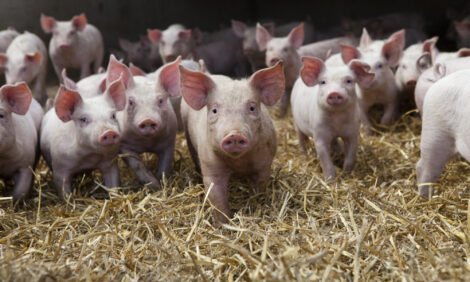



PRRSV can be disseminated through fomite contamination
A study was conducted by C.M. Melini and colleagues, University of Minnesota, USA, and presented during the 2024 North American PRRS Symposium.Farm biosecurity measures and the level of compliance play a crucial role in an industry where one individual oversees large populations of growing pigs across different sites. Growing pig caretakers move between sites to conduct daily chores such as ensuring barns are well ventilated and pigs have proper access to feed and water. As most growing pig sites lack shower-in/shower-out facilities, there is a probability of fomite contamination and virus dissemination across sites of different porcine reproductive and respiratory syndrome virus (PRRSV) statuses.
Understanding whether frequently touched surfaces by personnel contain viable PRRSV is crucial for raising awareness of the transmission risk and encouraging the industry to reconsider and enforce biocontainment procedures.
A surface contamination assessment sampling project was conducted in PRRSV-positive growing pig farms using a novel viability quantitative RT-qPCR (v-RT-qPCR) assay, to:
- 1) determine whether viable PRRSV can be detected on frequently touched surfaces by farm personnel
- 2) assess whether the level of PRRSV population shedding and the probability of detecting viable PRRSV are related
- 3) explore the relationship between standard and v-RT-qPCR for PRRSV detection under field conditions.
The study was conducted by C.M. Melini and colleagues, University of Minnesota, USA, and presented during the 2024 North American PRRS Symposium.
Ten PRRSV-positive growing pig farms located in the Midwest, USA, from one production system were enrolled in this cross-sectional study. Given the scarcity of PRRSV environmental detection data and standardized protocols for sampling, sampling was based on a previously conducted PRRSV environmental study. Twenty samples from different surfaces per farm were collected. Investigators wore clean Tyvek coveralls, plastic cover boots, and a clean pair of gloves during sample collection, changing gloves between each sampling event.
Selected surfaces were swiped with a DMEM moistened Swiffer pad and placed in a resealable bag. The pad was squeezed inside the bag and the liquid was poured into 20 ml sterile Falcon tubes. During the farm visit, a set of 8 ropes (16 pens) per barn were hung to collect oral fluids to characterize the level of population shedding in the barn.
Samples were refrigerated and transported to the University of Minnesota for processing and submitted to the Veterinary Diagnostic Laboratory for individual PRRSV screening through RT-PCR. Positive samples were then sent for further testing via viability RT-qPCR testing.
PRRSV was detected through oral fluids on all farms, with the proportion of positive ropes ranging from 50 to 100%. Overall, 20 out of 200 (10%) environmental samples were positive on the screening RT-PCR with Ct values ranging from 32.8 to 35.9.
Positive samples originated from pig pen penning housing sick pigs, general pig pen penning housing, mortality handling equipment, exhaust pit fan cone dust, sorting board handle, and main entry floor close to bench or line of separation. At the time of writing, RT-PCR positive samples had been recently submitted for v-RT-qPCR and results were not available.









